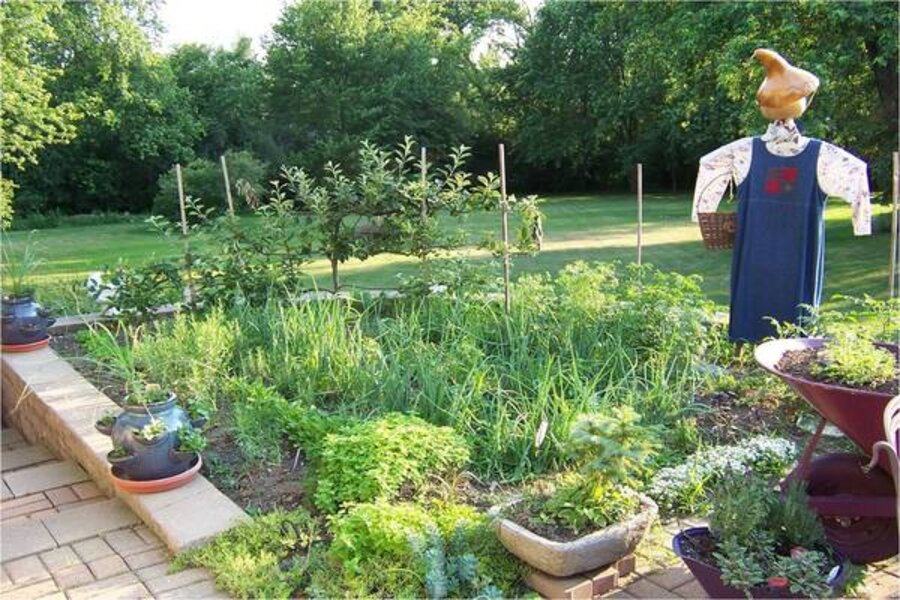Eight keys to growing great vegetables
Loading...
What could be better than walking into your garden or onto your balcony or deck to harvest some salad ingredients or a side dish for your dinner tonight? Boost your food production with these basics:
Location: Choose a spot with at least six hours (preferably eight to 10 hours) of full sun per day in an area away from tree and shrub roots. Vegetables and herbs ideally would be near the kitchen door and near a hose. Our vegetable garden is a whopping 150 feet from the house because thatʼs where thereʼs full sun and good soil. Closer to the house (and the kitchen), we grow herbs and leafy greens, which makes the harvest a snap. Vegetables need 1 to 1-1/2 inches of water per week. Buy a rain gauge to monitor water needs.
Soil: When starting a new garden, especially in an urban setting, a soil test gets plants off to a good start. Buy an easy-to-use soil test kit at the local garden center or online or send a soil sample to a laboratory. (In many states, the Extension Service offers low-cost testing.) The soil should have good tilth -- loose and crumbly and rich with organic matter. It should be fertile and well-drained. Improve your soil by adding organic matter -- compost, composted manure, chopped up leaves, weed-free straw -- and work it into the top three to four inches of soil before planting. In pots, use half soil-less potting mix and half compost, which increases fertility and water-holding capacity of the mix.
Planting: Plant cool-season vegetables in early spring once the soil begins to warm. They include lettuce, spinach, collard greens, mustard greens, Swiss chard, cabbage, Brussels sprouts, broccoli, cauliflower, kohlrabi, radishes, beets, carrots, turnips, rutabagas, parsnips, onions and cilantro. Warm-season vegetables, which can be planted outside after the last spring frost date, include tomatoes, basil, eggplant, peppers, beans, corn, cucumbers, melons, okra, pumpkins and squash. A soil thermometer can help determine when to plant. Typically the soil must be at least 55 degrees F.(13 C) before planting warm-season crops.
Succession planting: Successive sowings or plantings through late spring and summer will provide a fresh supply of vegetables over a long period of time. Do small plantings of leaf lettuce and radishes seven to 10 days apart in spring and then again in late summer. These are cool-season plants and donʼt grow well in the summer. Onion sets (the small bags available in spring) can be planted every two weeks for green onions (scallions). After the cool-season veggies are harvested, replace them with warm-season plants. Beans, basil, and cilantro can be planted every two weeks to prolong the harvest.
What to plant: Grow what you enjoy eating! Grow vegetables that you canʼt buy in the store. Ask at the local farmerʼs market about varieties they grow and how to prepare them. Start small if youʼre a new gardener. A 10-by-10-foot plot will hold several tomato plants, basil, onions, lettuce, and peppers.
Intercropping: This allows you to plant intensely in a small space. For example, radishes and carrots can be planted together. The radishes are fast growing and ready before the carrots, and this makes the most use of the space. Green onions, spinach, and lettuce can be planted between rows where tomatoes, peppers, cabbage, and corn grow.
Move ʻem: Rotate crops to reduce/control diseases that winter in soil. Donʼt plant the same vegetables (or related vegetables -- such as cabbage and broccoli) in the same spot more than once in three years.
Fertilizer: Fertilizer purchased in garden centers typically contains nitrogen for top growth, phosphorous for root establishment and fruit formation, and potassium for root development and disease resistance. These three elements are usually referred to on the package as nitrogen, phosphoric acid, and potash. A package labeled 10-10-10 contains 10 percent nitrogen, 10 percent phosphoric acid, and 10 percent potash. Apply vegetable garden (granular) fertilizer to the soil just before planting. Spade, till , or rake it into the top four to six inches of soil. A 15-pound bag of 10-10-10 is typically used for 1,000 square feet.
-----
Nina Koziol gardens on a deer-infested acre southwest of Chicago where her beds and borders are designed for butterflies, hummingbirds and other wildlife. She teaches at the Chicago Botanic Garden and the Morton Arboretum. Find out more on her website, This Garden Cooks. Read Nina's previous posts here at Diggin' It by clicking here.





